Call it fate. During the pandemic, Fionn Kidney took himself west to live on an island off Mayo. It’s easy to imagine the effect: a quintessential city boy, busy professional with global time suddenly distorted, the Atlantic winds constant, and time, endless time, to think, and observe his new neighbours.
“Just a community of 60 people where, you know, everybody’s handy,” he says of the people of Inishturk. “And a lot of people can fish, farm, build a house, fix a pipe, whatever it is. But as well, just like, survive! They need to be interdependent and have that kind of community resilience. So, when I was leaving there, I wanted to go and get involved in something that was more socially oriented.”
He’d heard of a build-school in Clare run by an Australian, Harrison Gardner. He signed up. The pair clicked. One evening, they were chatting around the campfire. And Kidney told him about this idea he had for a community project that would revolve around the promotion of the stuff he witnessed in Mayo – community and self-sufficiency with a collective mindset. Gardner listened carefully.
“And Fionn told me about the idea of a social enterprise,” Gardner says. “He could see that we were not a profit-driven company. We weren’t in it to make money. We were giving buildings away, we were bringing people on the course for free who couldn’t afford it, to make sure as many people learned as possible. Fionn told me there was a structure for this thing that we were doing by accident.”
Common Knowledge was born. In the beginning, they hosted build schools from the home Gardner built with his wife, Erin McClure, a designer who is, with builder Spider Hickman, one of the four co-founders of the project. But this year, the project moved to the buildings of a former Burren retreat which had been operated by a Dutch woman, Sonja O’Brien. She was delighted to see the buildings repurposed into a community enterprise.
To acquire the property, they formed a board, including GIY founder Mick Kelly, writer and broadcaster Manchán Magan, climate adviser Ali Sheridan, and co-founder of Brave Lab Jess Hayden. At the first meeting, they built a table for the board room. The Common Knowledge project raised €60,000 in crowdfunding. They then raised another €200,000 through community bonds, with locals investing in €10,000 denominations, to be returned with interest over five years. The remainder of the sum would be obtained through commercial banks.
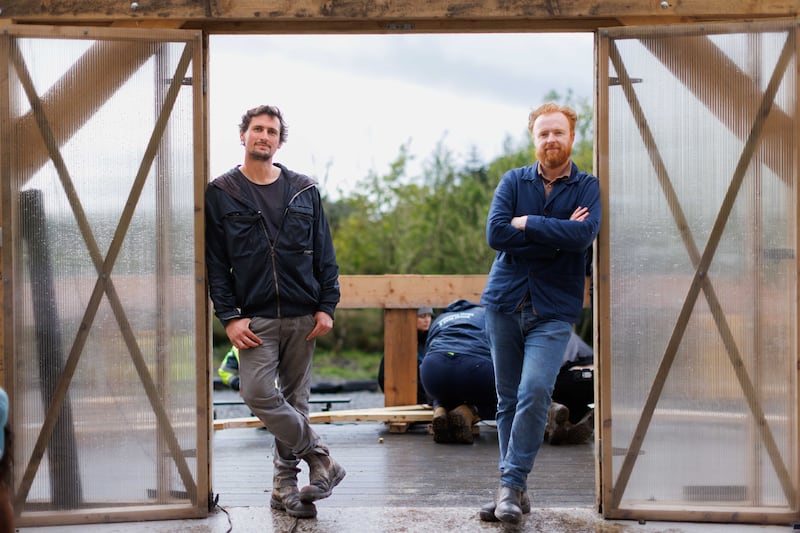
This March, they moved in. More than 200 people turned up for a meitheal week: weeding, building, painting, repairing, and getting the place habitable in jig-time. Now, on a squally typical west-of-Ireland summer’s day, where its threatening to rain but can’t quite be arsed, the week-long build course is packed to capacity.
“Our mission at Common Knowledge is to support people to have a truly sustainable home life,” Kidney says as he gives a tour of the grounds.
“So that it is affordable and sustainable and doesn’t harm the planet. Maybe you own a property. Maybe you are just setting out and wondering where to go. Or rather than buying a shelving unit from Amazon, you are deciding to fix and repair. A radical change in all our behaviour is needed if we are going to tackle the climate crisis or housing or cost-of-living crisis. Our question is: what are the first steps you can take in each or those areas? And that is why we are sharing these skills. It is to give people a pathway. A lot of the things we are teaching are not revolutionary at all, it is just looking backwards to go forward. The answer is not always buying it from cheapest, fastest, and easiest. Often, a lot of these skills were practised by previous generations.”
The new Common Knowledge home is not far outside Kilfenora, but you still need an Eircode to find it: it’s on a beaten track at a crossroads off the beaten track. It covers 50 acres. The group has got some funding for a biodiversity scan. “To understand what is living here,” Kidney says, looking out at the expanse of green. “But we have haw and hazel and a lot of beautiful Irish woodland.” Near the stone fire circle is the skeletal frame of a wooden sweat lodge, a remnant of the retreat. Rainbow chard and quinoa, peas, scallions and carrots are thriving in the vegetable area. Ciara Parsons, a perma-culture expert, is on-site regularly to oversee that project. Food is an important part of what they do. “You won’t get a better lunch anywhere between here and home,” Gardner promises.
Guests eat together and socialise in the common room during breaks and in the evening. It’s pleasant: battered leather couches, a well-stocked bookcase, board games. No TV. The build schools run from Monday to Friday, with a maximum of 32 people taught by four dedicated instructors. So far, the profiles of those who sign on are just what Kidney and Gardner would have hoped for. Anyone from age 18 to 75. An equal split of male and female. About 10 per cent from the LGBTQ+ community. They’ve an access programme, too, for people who simply can’t afford the week-long fee (€850, with instalment options available).
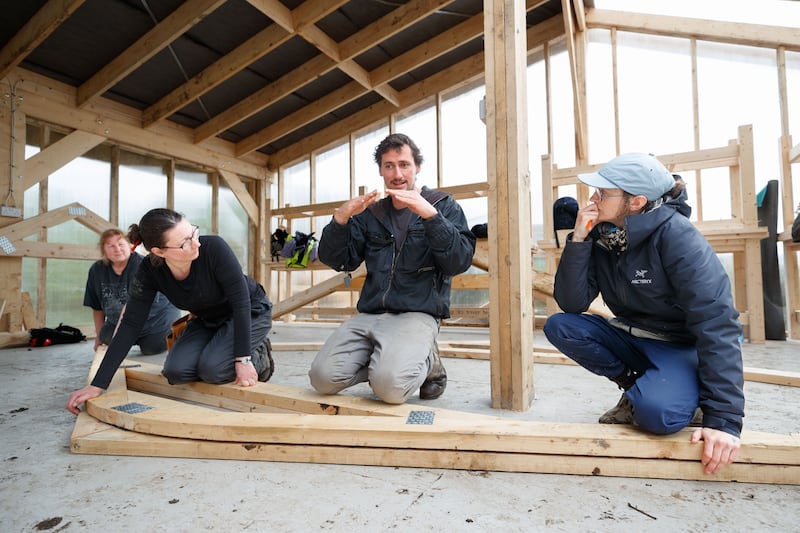
Private rooms are available for €75 per night. There are also camping spots for €10. There are courses in organic growing, dry stonewalling, welding and DIY. They’ll even teach you how to build your own yurt. And because they’ve tapped into the most burning concern of an entire generation –where they are going to live – people are signing up. A staggering lack of governmental imagination has caused a generation to lose faith that they might ever become homeowners, still a sacred concept in Ireland. The rental model is broken: neither landlords nor tenants are happy. What Ireland does have, scattered around the country, are old buildings, long abandoned to the spiders and ghosts.
It is basically Lego what I do, compared to someone who has grown up surrounded by nature and has to figure how to turn that into a house
— Harrison Gardner
“People don’t really want to build their own home,” says Gardner. “But they don’t see any other way. For a lot of people, they’re looking at the housing market, and the only houses they can afford are ruins or derelict properties. So, they know they need to learn skills. For those same people, it’s just as unattainable to have a builder do that work for them as it is to buy a house that’s already finished and in good condition, because of costs.”
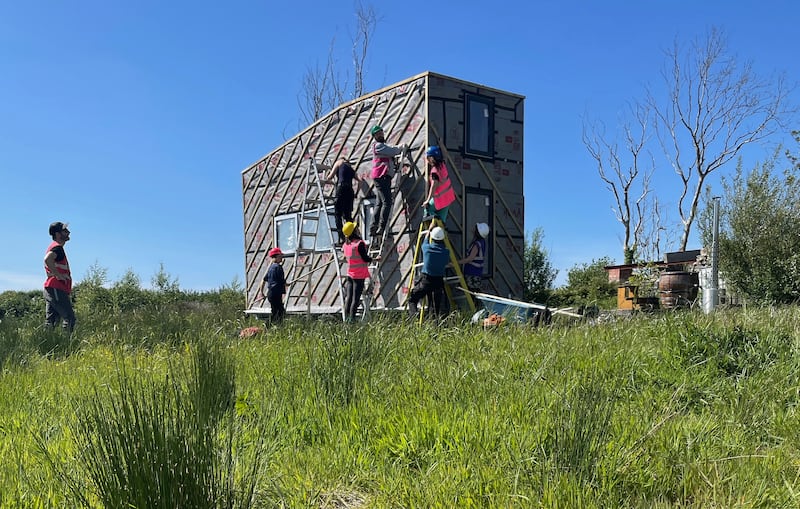
Gardner attained a national profile after featuring in the recent RTÉ series with the no-fuss title, Build Your Own Home. The home-renovation show is a tried and trusted staple, but rather than the usual stress and unexpected-structural-flaw-wrecking-the-budget storyline, the Australian brought with him to site a Zen-like calm and dazzling optimism, which somehow made hacking through old walls and floorboards appear like an exercise in transcendental meditation.
[ Residents’ bar: How a Mayo pub has become a home for three familiesOpens in new window ]
He laughs good-naturedly at the mention of the show. But as he talks about how he arrived in Ireland, his is a story of a kind of natural obsession with one of the primal needs: somewhere to live. He has lived just outside Ennistymon for eight years. The original plan was to stop in Ireland for three months on his way from Iceland to Malawi. He spent a decade as a nomad working on building projects around the world, and quickly learned that his formative experiences, in the conventional materials of masonry and timber, were limited.
“It is basically Lego what I do, compared to someone who has grown up surrounded by nature and has to figure how to turn that into a house.”
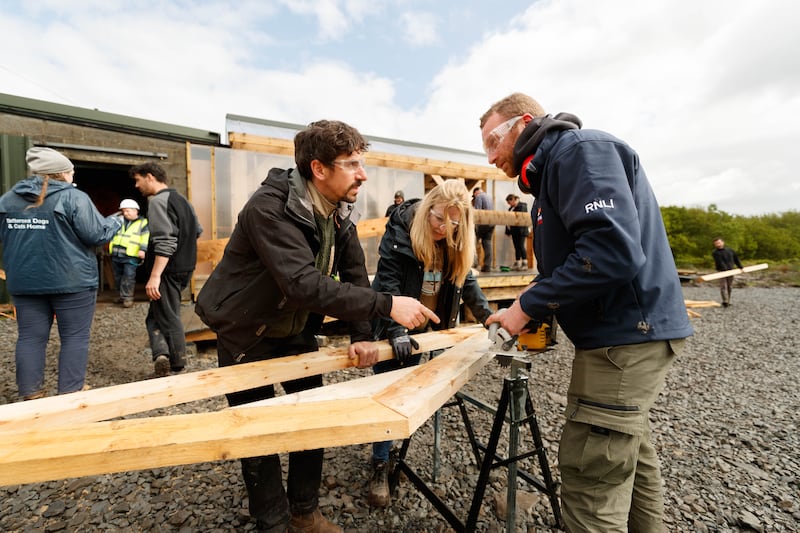
He moved through India and South America learning how to build from mud and even discarded garbage. In Colombia, he was part of a building team putting together some dwellings deep in the jungle.
“We were building an off-grid building that was completely self-sufficient. It had solar panels, a rainwater catchment, and its own sewerage system. We were building at the top of a very steep hill. We had to bring all our materials in by a small boat, and transfer them to a horse and cart, and then to a mule to get them up the rest of the hill. But the mule could only carry things that were in bags. So mostly we were the mules, carrying things up the hill to build this building.”
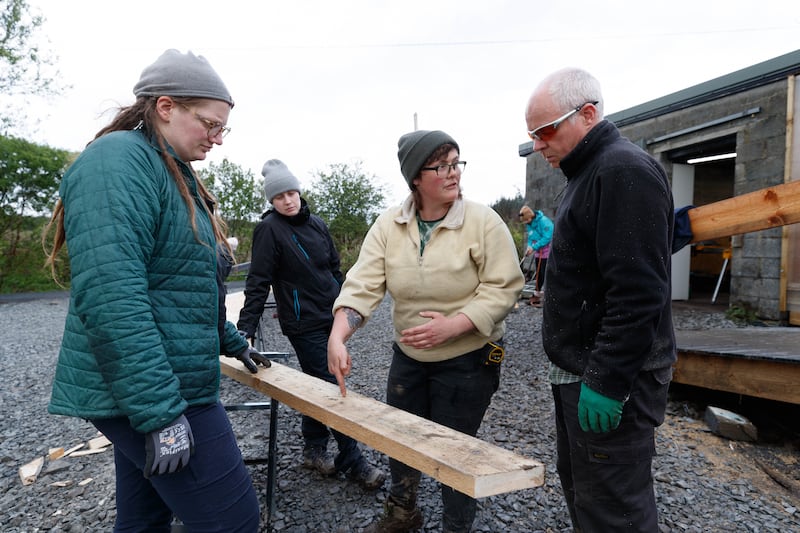
He arrived in Ireland at an interesting time. In 2012, the nation was still punch-drunk from the aftermath of the Celtic Tiger. Houses prices had tanked. Hotel corridors were eerily silent. National confidence was on the floor of those same hotels. “It was all anyone was talking about when I got here,” he remembers.
The countryside and Irish towns were littered with unfinished dwellings. “Ghost estates” was the phrase of the era. For Gardner, it felt like a period rich in possibility. “There was a post-recession mood of: we can do anything! Everything was cheap.” He fell in with a crowd of people who were starting flea markets, furniture-making businesses and pop-up eateries. Some succeeded, some failed. It was easy to start again.
The peculiar thing was that while the national narrative was one of abject economic failure and a kind of shame, there was a surging sense of creativity among the people Gardner got to know. Driving through Clare, a ruined building caught his eye. “Coming from Australia, where there are no buildings over a hundred years old... It was for sale. For me, this was like a castle. I’d never had a chance to work on a building like that before.”
He decided to buy it with a view to busying himself with a project before he moved on. Life had other plans. He met Erin, who is from Clare. Now, the couple have two children. The cottage has become their home. It has a timber-frame kitchen extension and a bedroom or two added on.
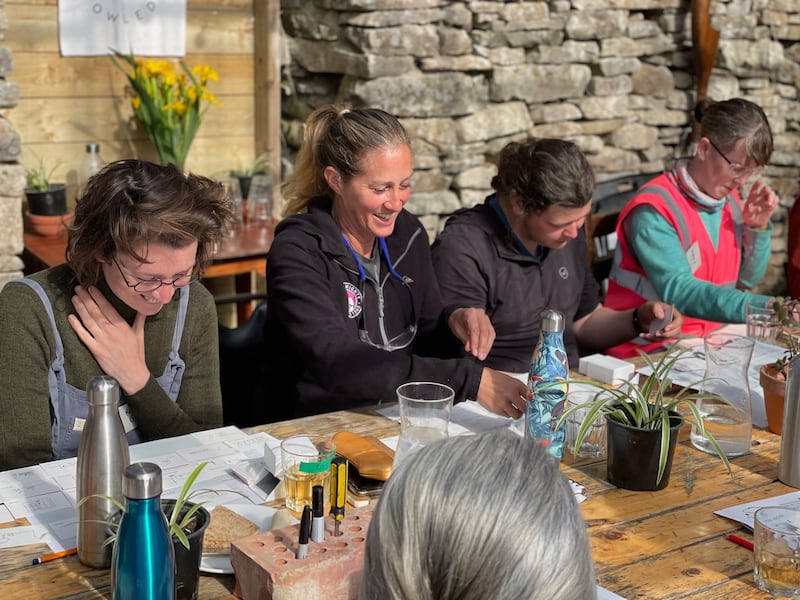
“We are building it as we go. And that is the only way we can afford to do it. And that works perfectly for us.”
He has no time for the fear that the recently announced government grants available to refit derelict houses will be dwarfed by the likely cost of the work involved.
“Ah no. It’s amazing. It’s really putting the spark into people to consider. The big thing is that every one of those buildings already has permission to be there. That’s hugely attractive to people terrified of the planning process, which can be just this big monster they don’t know how to navigate,” he says. “People have been renovating these derelict properties for years before the grants ever came in, and they’re devastated. They missed these 50 and 70 grand budgets – for a lot of people, that can be up to half or a third of their total bill.”
We walk up a laneway where the week’s course-group has spent a morning working on truss construction. Snuffles, a charismatic French bulldog Kidney adopted from the Dogs Trust, comes along for the trot. The body of the wood-framed house they have constructed stands nearby. The room is bustling with activity: sawing, hammering, and building instructors standing over the clients.
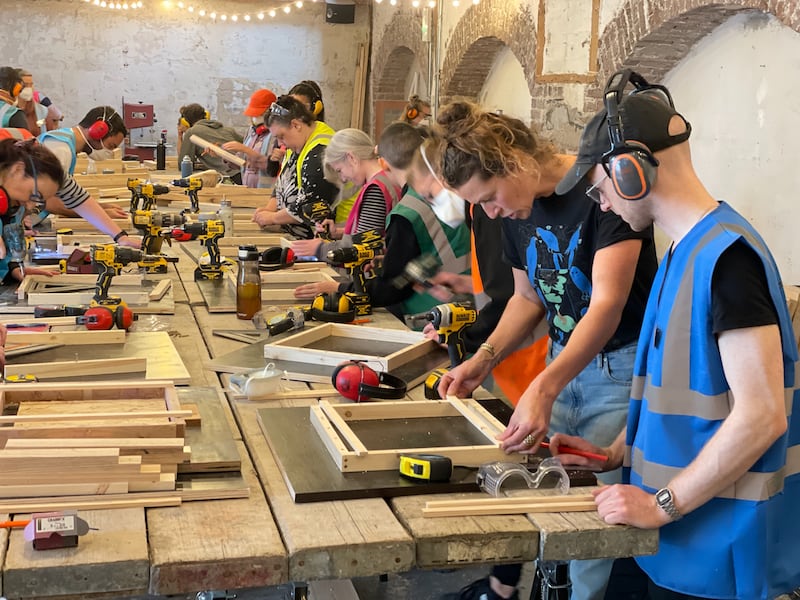
Kirsty Hourigan happened upon Common Knowledge after “doing mad googling”. She has a background in metal fabrication, so has a reasonable degree of know-how and confidence. And she is clear why she is here.
“I want to build a small house. A tiny house. In the Outer Hebrides. But building a house was a bit intimidating.”
By day four, she is confident she has found what she needs here. “The course is broken into modules that make the information easy to think about. Really well designed. A lot of hands-on experience. It has given me the confidence and the ideas to do it myself.”
It’s raining softly and steadily at lunchtime when everyone troops into the kitchen. It’s a casual buffet with a terrifically imaginative menu; nettle soup, aubergine, salad, homemade breads. The course throws strangers together, encouraging them to eat and talk about their experience. For some, that presents a challenge, particularly after the habits of isolation and distance acquired through the pandemic. Kidney remembers coaxing one customer who believed they had made a terrible mistake as soon as they arrived at the main building. Within 48 hours, the same person was thriving and delighted.
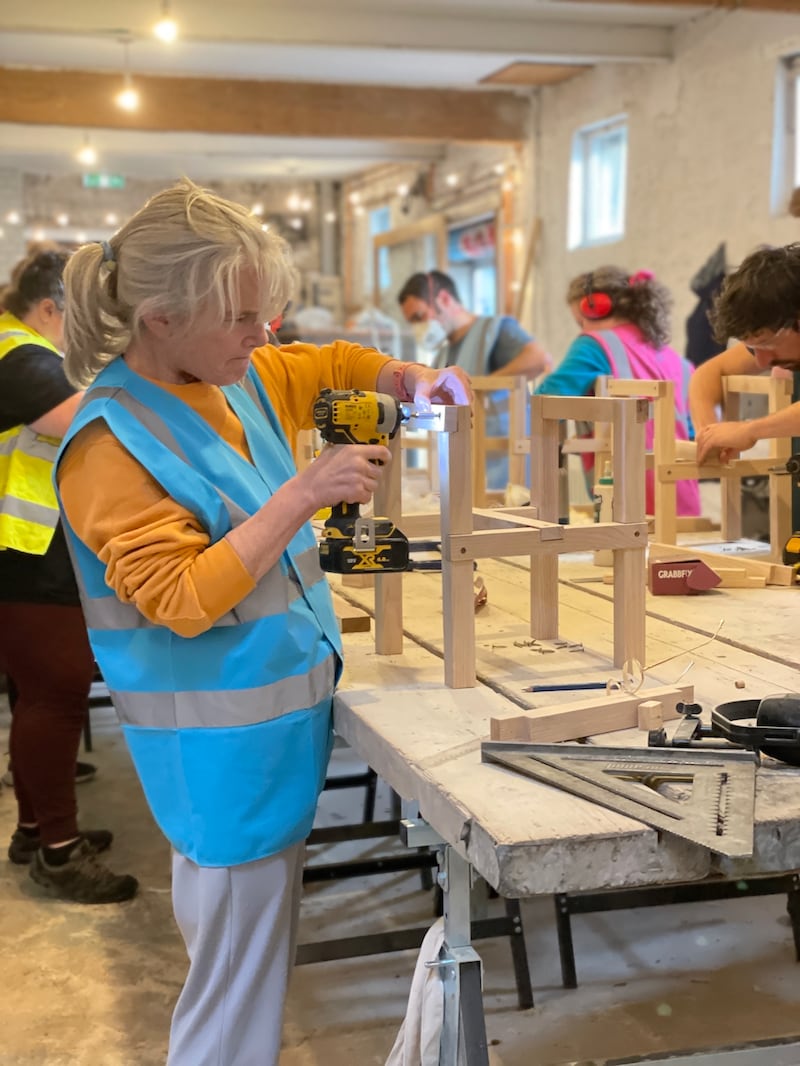
“It’s kind of a sense among people that there must be more to life,” says Jane Ní Dhulchaointigh, the award-winning creative entrepreneur who sits on the board.
None of us own Common Knowledge. We’re members of the company rather than shareholders. That’s what is important about this project
— Fionn Kidney
“It is unusual to have four co-founders, and it is at the heart of their collective approach. It is a belief in the power of community. The spirit of it is: if we all come together and believe that this kind of world is possible where we help each other and learn from each other, it is a totally different way of doing things from the business paradigm. And while the co-founders are working so hard, there is a whole crew of instructors and volunteers and the board. It is basically a gathering.
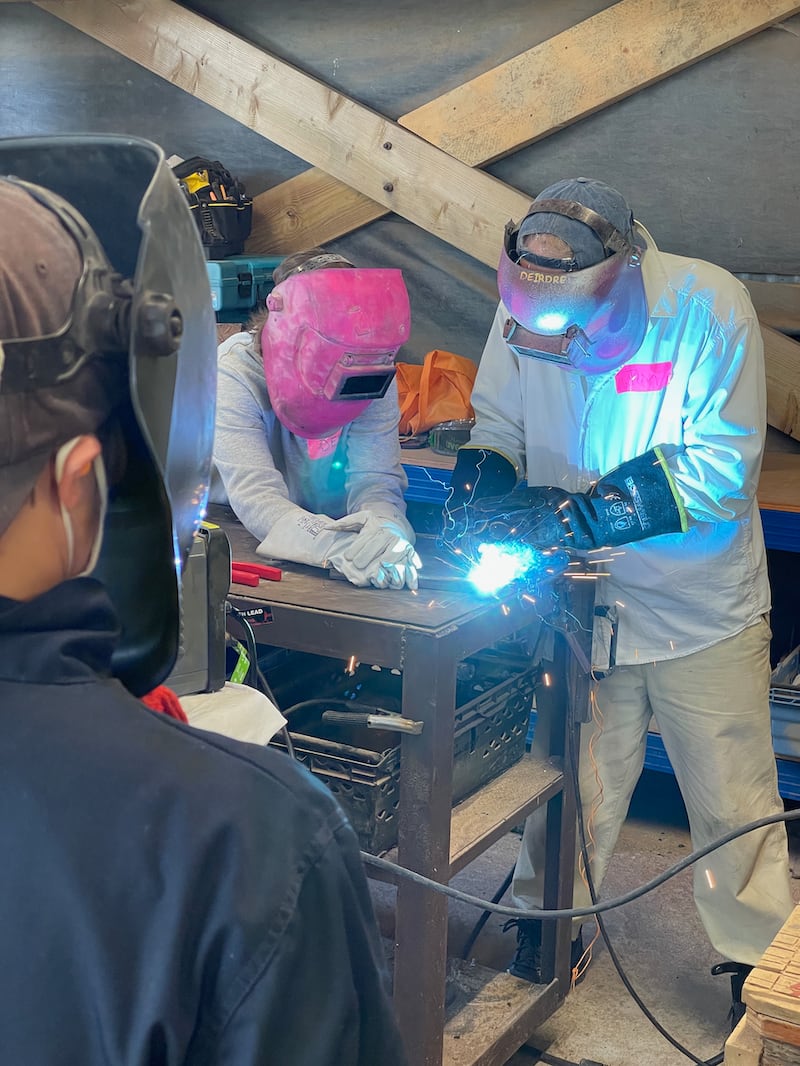
“People have been really burned by a system where it is all about working and being individual. That sense of isolation. And getting really worn out. And not being able to afford anything, either. Being disempowered. The new generation is not really accepting that. This challenges that whole system to say: ‘What if we believed we are capable of so much more as people?’ There have been amazing examples already of people who did the course and then turned up to help others on the course to build their extension. That is the spirit of it.”
Not everyone who attends the school will attempt to build their own home. But they’ll be articulate in the language of building, and might hire direct labour, saving inestimable sums. At the very least, it takes the mystery out of home building. “Not everyone will be a great cook,” Gardner points out. “But everyone should be able to make themselves a basic meal.”
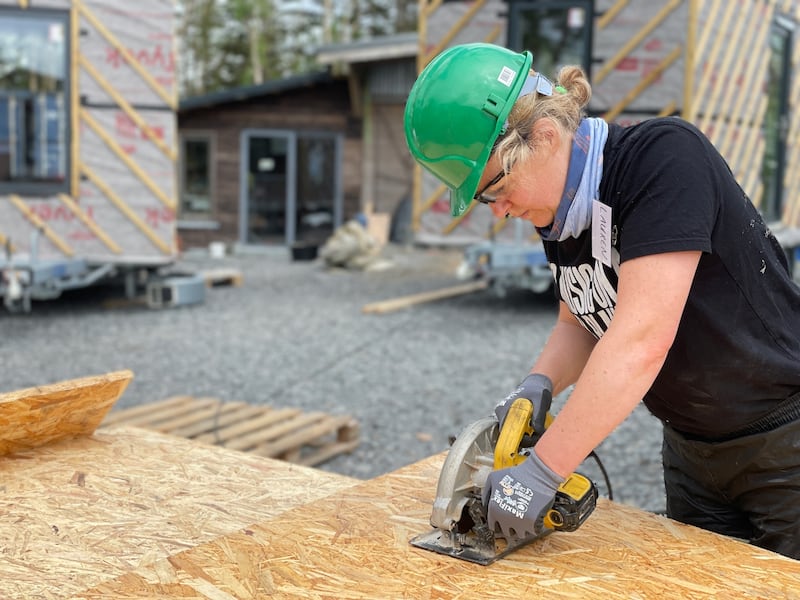
If all of this sounds impossibly idealistic and worthy, so be it. Kidney and Gardner’s open-hearted sincerity about the project can make them seem like innocents almost, given that property and house-construction in Ireland was something akin to a get-rich-quick-racket built on Ponzi scheme principles. In purely commercial terms, Common Knowledge is a smart idea, and the co-founders are able operators. It’s a neat twist on the old “build it and they will come” adage. In Kilfenora, the invitation is to come and build it.
[ Is it better for the environment to renovate or build from scratch?Opens in new window ]
They broke even last year, and it’s not difficult to imagine the venture quickly becoming profitable. But while Kidney and Gardner have hurled themselves into this project with the zeal of entrepreneurs (“They are never not doing this” another staff member said), they have structured the company in a way that places it immovably at the heart of the local community. They essentially pay themselves a wage and that’s it. That comes as a surprise to many of their guests.
“When we talk about being a social enterprise, people don’t necessarily know what that means,” Kidney says.
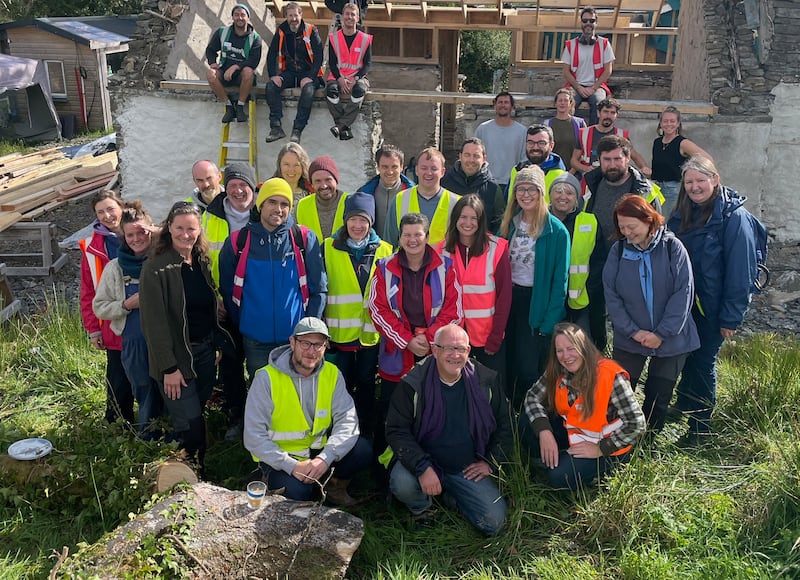
“Yes, we’re mission-driven. Our mission is focused on supporting people to live a truly sustainable home life. The type of organisation we’ve set up here is a company limited by guarantee, rather than a limited company, and essentially means that there’s no private shareholders. None of us own Common Knowledge. We’re members of the company rather than shareholders. That’s what is important about this project. Essentially, we’re sending it off so that it can become its own self-supporting sustaining organisation, where all the profits are reinvested and providing for the impact of our mission among people, on the planet. Even in the acquisition of this property, that property essentially goes into a trust. It will never belong to me or Harrison. I don’t think it’s acceptable any more to set up a business that has no regard for people or the planet. Business needs to change.”
That an Irish person would knock down a stone cottage that was built 150 years ago here – like that’s… that’s Ireland’s history
— Harrison Gardner
Given the broad story of 21st century construction in Ireland – billions written off after daft ventures, lunatic price rushes, a shameful homelessness crisis – Kidney’s vision is a stinging riposte to it all. And there are many like him. Clare has become a destination point of a kind of Oregon Trail for a generation choosing to quit the cities. Ennistymon is thriving, and nearby towns are beginning to see new arrivals. Gardner and Kidney are convinced that the combination of remote working and necessity will bring about a revitalisation of west of Ireland localities – particularly those on the coast. They are convinced, too, that there is a resistance movement starting; to the old ways, to the acceptance of the three bed semi-D, to visualising a home that is affordable. Dreamy? That’s for you to decide. As Gardner warns, there’s a message in the lonesome structures with the caved-in roofs and unlit fireplaces which span the west of Ireland countryside.
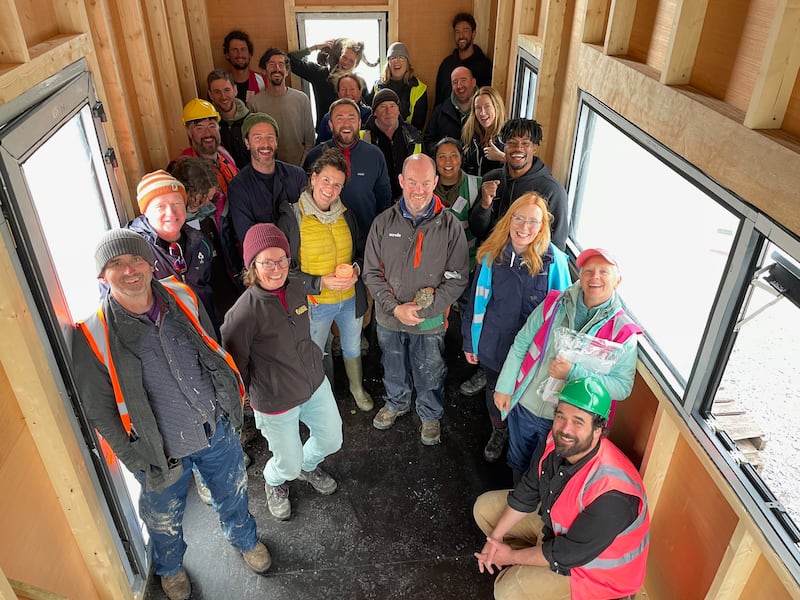
“We just need to keep ourselves open to the changes that are coming, the developments in materials, the inventions people are coming up with; these incredible things we’re learning and solutions we’re finding to our problems. But also, to keep looking backwards at the buildings that have really stood the test of time. In Ireland, that’s these stone ruins. It’s heartbreaking to me. They’re not even my history, but that an Irish person would knock down a stone cottage that was built 150 years ago here – like that’s… that’s Ireland’s history. That’s the construction history of how homes were built here. And it doesn’t need to be restricted to museums. It can be, like, in our homes and part of our life. That would be like relegating the language just to a dictionary and not actually speaking it. If we don’t practise the things that have been practised here for generations, then we will lose them. And they will just become ideas. And things we talked about in school.”












